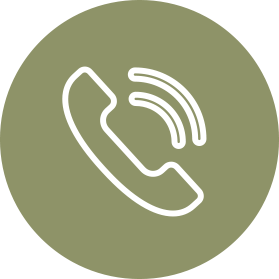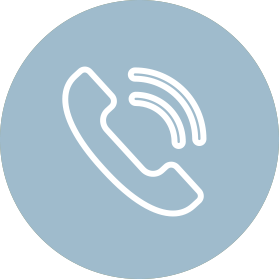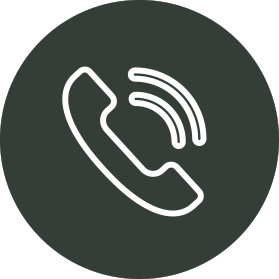Symptoms of Sleep Apnea and How Your Boston Dentists Can Help
Sleep apnea is a sleeping disorder in which ones breath stops for a considerable amount of time which ranges from very few seconds to a couple of seconds let say fifteen seconds.
The disease has the potential for being fatal and the fact that most people either have it unnoticed or if they are already diagnosed, they take it for granted and hence do not seek the necessary medical attention towards it.
There are three types of sleep apnea; central sleep apnea, obstructive sleep apnea or the complex sleep apnea.
Central Sleep Apnea
Central sleep apnea which originates from the brain has everything to do with signals.
In this type of apnea there is failure by the brain to send proper messages to breathing muscles to either contract or relax hence there is an abnormality in the flow of air due to failure of the necessary muscles to respond accordingly causing a disruption in breathing circles and causing interment pauses which are referred to as sleep apnea.
This type of apnea is less frequent compared to obstructive sleep apnea but more common than the complex sleep apnea.
The cause of this type of apnea can be as a result of heart failure which then deprives the brain of the much needed oxygenated blood and nutrients for its proper function. There have also been cases of central sleep apnea in individuals on high doses of opiates.
An individual whose system is accustomed to low altitude and spends time sleeping at high altitude might have am the occurrence of central sleep apnea since the supply of oxygen at high altitudes is very much reduced as compared to the amount at lower elevations
Common Symptoms of Central Sleep Apnea
Observed periods of stopped breathing or abnormal breathing patterns during sleep are the most frequent symptom of sleep apnea. This is because of the inconsistent signaling of either the relaxation of the contraction of the respiratory muscles.
Hypersomnia which is a situation in which one experiences excessive daytime sleepiness even after having enough or more than enough sleeping periods the previous night.
An individual has had more than 8-9 hours of sleep the last night should not experience daytime sleepiness under normal conditions, and if it happens, that should be an indicator of sleep apnea.
Short periods during sleep when breathing terminates is a general symptom of central sleep apnea. While others exhibit very shallow breathing, others tend to have their breathing stop for a few seconds.
The patient may wake up with shirt breaths and due to lack of oxygen; they tend to wake frequently during the night hence leading to insomnia.
Morning headaches are frequent in those experiencing CSA because of the oxygen deficit which is the same cause of improper breath signaling.
Other symptoms of CSA include which are significant as a result of Parkinson’s disease or any other neural conditions are:
- Mood changes
- Snoring
- Difficulty swallowing
- Changes in speech patterns
- Changes in voice
- Generalized weakness
Complex sleep Apnea
Complex sleep apnea which is also referred to as treatment-emergent central sleep apnea occurs when an individual with eth disorder seeks medical attention and they are put under Continuous Positive Airway Pressure (CPAP) therapy.
For those patients with Central sleep apnea, this kind of treatment causes signaling of the breathing muscles while at the same time they result in the obstruction of the airways hence it has a therapeutic result while at the same time it has a negative connotation.
For patients who are just introduced to CPAP, about 20 percent undergo complex sleep apnea and as time continues the apneas reduce and after a consistent period of use the occurrence reduce to 2 percent which is evident that the therapy causes the complex apnea.
Symptoms of Complex sleep apnea include sleep fragmentation and oxygen de-saturation. During the day the victims experience excessive sleepiness which makes them drowsy and reduces their concentration spans. Early morning headaches are encountered due to oxygen de-saturation.
Victims under CPAP may start experiencing very little, or no positive changes from the administration of the therapy since the condition compromises the effectiveness of the treatment by exhibiting its dominance over the patient.
Obstructive Sleep Apnea
The symptoms of OSA are very varying in different people with some experiencing mild symptoms while others experience severe symptoms.
This condition is characterized by obstruction of airways which can vary from mild to the variant. There are other causes of this disorder which can help us understand the symptoms of OSA.
Such objects are the collapse of the back of the throat which is the pharynx when someone is sleeping.
The primary and typical symptoms include;
Dry mouth due to a night long of breath struggles with the mouth as an alternative route for air flow rather than the nasal cavity.
Daytime sleepiness: while suffering from OSA, an individual’s sleeping experience is free of quality and quantity which makes them susceptible to sleep during the day.
Pauses in breathing: individuals with OSA often wake up suddenly after intermittent breathing pauses while gasping and tending to choke. With obstructive sleep apnea wake up suddenly after these breathing pauses, often gasping and choking. Such choking may cause noises which may irritate an individual sharing bead or bedroom with the victim.
Difficulties with remembrance and concentration.
Snoring: Snoring is a common occurrence in individuals with OSA, but it is not a sure event of a victim since many individuals breathe but are free from apnea.
Strange mood ranges and irritability- according to the Division of Sleep Medicine at Harvard Medical School, those who do not get enough sleep tend to be more stressed, irritable, angry and mentally exhausted. According to the patient, they might be having the recommended hours of sleep, but the apnea might be busy chewing their hours of sleep away hence if your moods start to change for the worse over no apparent reasons while you have enough sleep, then it is time to see a sleep specialist.
Often waking up for various reasons in the night, the fact that an individual’s sleep is disrupted there are cases where the victim will make several trips to the loo in one night. One might think that that is the case, but in a number of cases, people find themselves going to the toilet while trying to figure out why they might be awake while in the real sense they are experiencing sleep apnea. Therefore, if your trips to the loos at night start increasing, then there is need to check with a sleep scientist if you are okay.
Morning headaches- if every day you get out of bed you experience discomfort in your head due to some pounding even if you got the recommended eight hours of sleep, then you might be having a sleep disorder. The reason is that apnea disrupts your sleep to the point that you realize you have more than a hundred intervals of wakefulness in eight hours which is very detrimental to one’s health.
Worse driving- according to a journal SLEEP in 2015, it is recorded that those who suffer from the sleep apnea disorder are two and half times more likely to be the cause of accidents.in the same research, patients with sleep apnea under treatment had their tendency of causing accidents to reduce by seventy percent. This is because sleep apnea causes excessive daytime sleepiness and the victims not knowing that they are deficient in sleep goes ahead and drives.
How Dentists Can Help with Sleep Apnea
You might be wondering how a dentist who works on dental issues could be useful in controlling snoring and sleep apnea.
But they too have a role to play in ensuring that the symptoms are managed and that the victims live almost usually.
Of all the health professionals, the dentists have the highest advantage when it comes to the view of a patient’s lower throat and the upper respiratory tract hence they are the most suited in advising whether the snoring, the intermittent breathing, the pauses in breath or any other symptom is as a result of obstruction or not.
Dentists first use a pharyngometer test to know whether one has sleep apnea and this they do by determining the size of an individual’s airways and the extent of their collapsibility.
To get all these details, one only needs a maximum of ten minutes which make the provision by the dentists very useful. Depending on the extent of one’s apnea, the physicians can recommend a CPAP machine which then forces air down the airway.
However, this treatment involves a noisy engine, bulk an so much discomfort. It is at this point that eh contribution of the dentists magnifies since they are the ones capable of designing custom-fitting devices after carrying out a pharyngometer test which they are the ones licensed to carry out and offer the best advice.
In case the result from the pharyngometer shows that indeed you have a sleep apnea, the next step by the dentist is that they suggest a home sleeping study test where the dentists and other physicians get to monitor the biological conditions raging from basal metabolic rates, breathing rhythm and any other relevant aspect in order to ascertain the findings of the pharyngometer.
In the above we mentioned that treatment-emergent sleep apnea is as a result of the use of Continues Positive Airway Pressure (CPAP) and if a victim indeed minds and is not entirely comfortable with CPAP all hopes are not lost, there is a way out and this is where the dentists come to play role.
The solutions offered by the dentists revolve around providing appliances which are not therapeutically but are instead use mechanical means to put the breathing under check and in the right rhythm.
Dental Sleep Medicine
Dental sleep medicine is a field in which dentists use the best breathing airway appliances to control sleep ordered breathing. The devices are inserted orally and therefore are made in such a way that they are specific to a given individual.
To have the best appliance for an individual’s cases, the dentists work together with sleep scientists to offer each of their clients the very best.
Oral Appliance Therapy
This therapy was first developed in adults, and it involves the fitting of an appliance which is in the fashion of a mouth guard. The device is custom-made and therefore worn in the mouth only during sleep hence offering effective treatment in that it supports the airway from collapsing by holding the jaw in a forward position.
Side effects of the Oral Appliance
When first using the device, quite some people feel discomfort since it is a strange object in your mouth. However, if fitted well, the appliance should be comfortable the whole night.
In case, there is pain which is a result of the stretch of the temporomandibular joint which is eth main cause of most discomforts. After the appliance is out in the morning, the trouble should go away.
Dentists are useful when the pain persists as they can advise and tailor a better tool that may bring about less discomfort.
Mandibular Advancement Prosthesis in Orthodontics
In cases where one has a pre-made appliance referred to as Mandibular Advancement Prosthesis (MAP), the dentists have a role to play in that they can adjust a device which is not custom-fit in such a way that they fit the patient comfortably preventing the jaws to move backward leading to snoring.
This is especially applicable when the patient’s condition is mild or straightforward. The dentists work together with physicians who can advise in cases of side effects feh MAPs such as dry mouth or tooth discomfort.
Dentists, therefore, offer practical solutions since the side effects of these appliances are so minimal and are not in any way a hindrance to their use.
Contact us to schedule a sleep apnea consultation with our Dentists in Downtown Crossing or Dentists in Government Center.
 DOWNTOWN
DOWNTOWN SEAPORT
SEAPORT GOVERNMENT
GOVERNMENT

